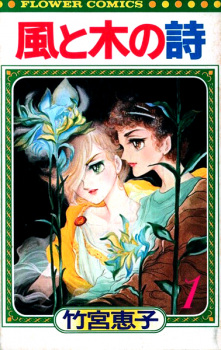Alternative TitlesSynonyms: The Song of Wind and Trees, KazeKi, The Poem of the Wind and the Trees, The Song of the Wind and the Trees Japanese: 風と木の詩 More titlesInformationType: Manga
Volumes: 17
Chapters: 139
Status: Finished
Published: Feb 29, 1976 to Jun 1984
Theme:
Historical
Demographic:
Shoujo
Serialization:
Sho-Comi Authors:
Takemiya, Keiko (Story & Art) Statistics Ranked: #5732 2 based on the top manga page. Please note that 'R18+' titles are excluded. Popularity: #2249
Members: 9,706
Favorites: 339 Resources | Recommendations
|










